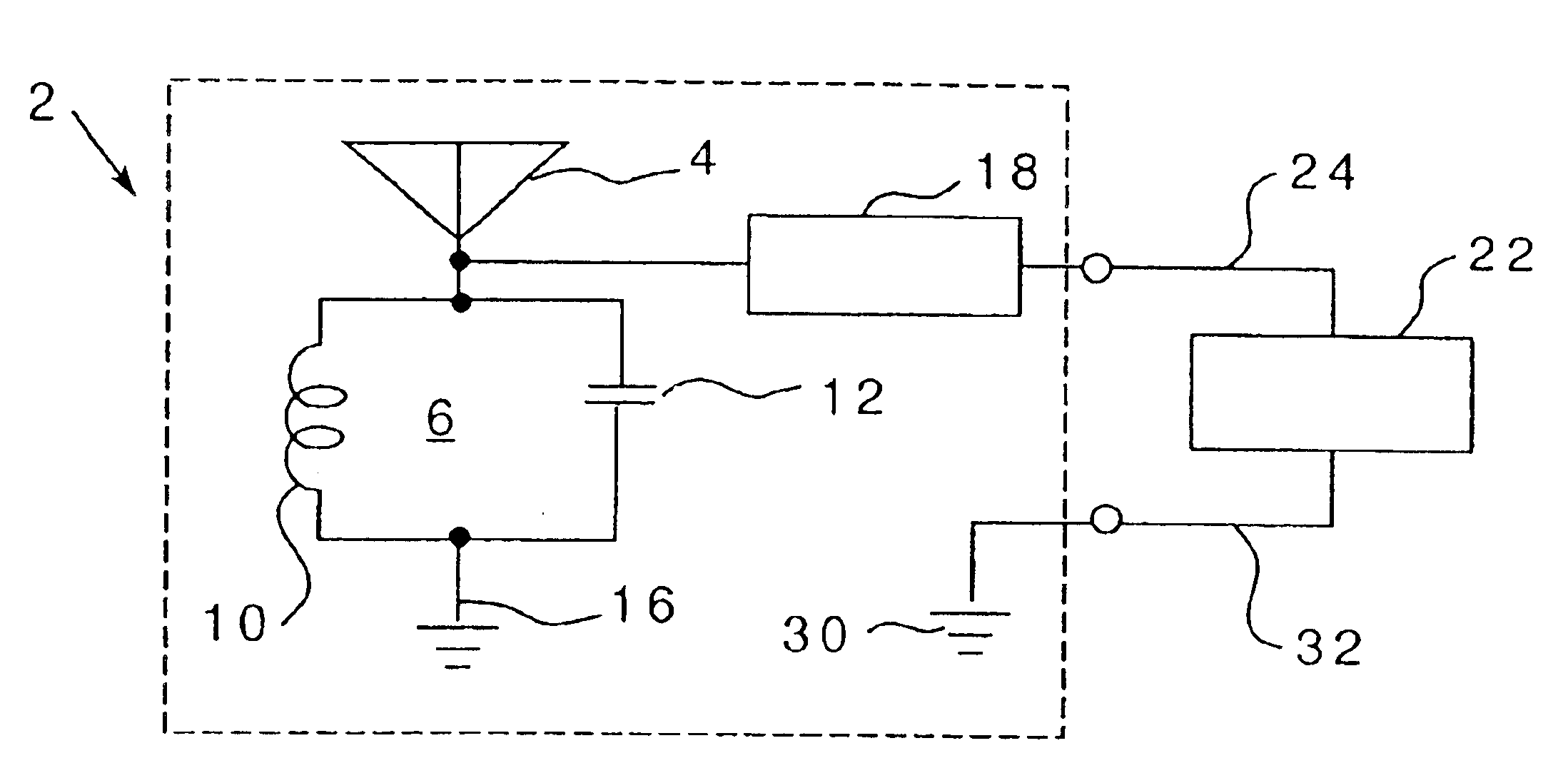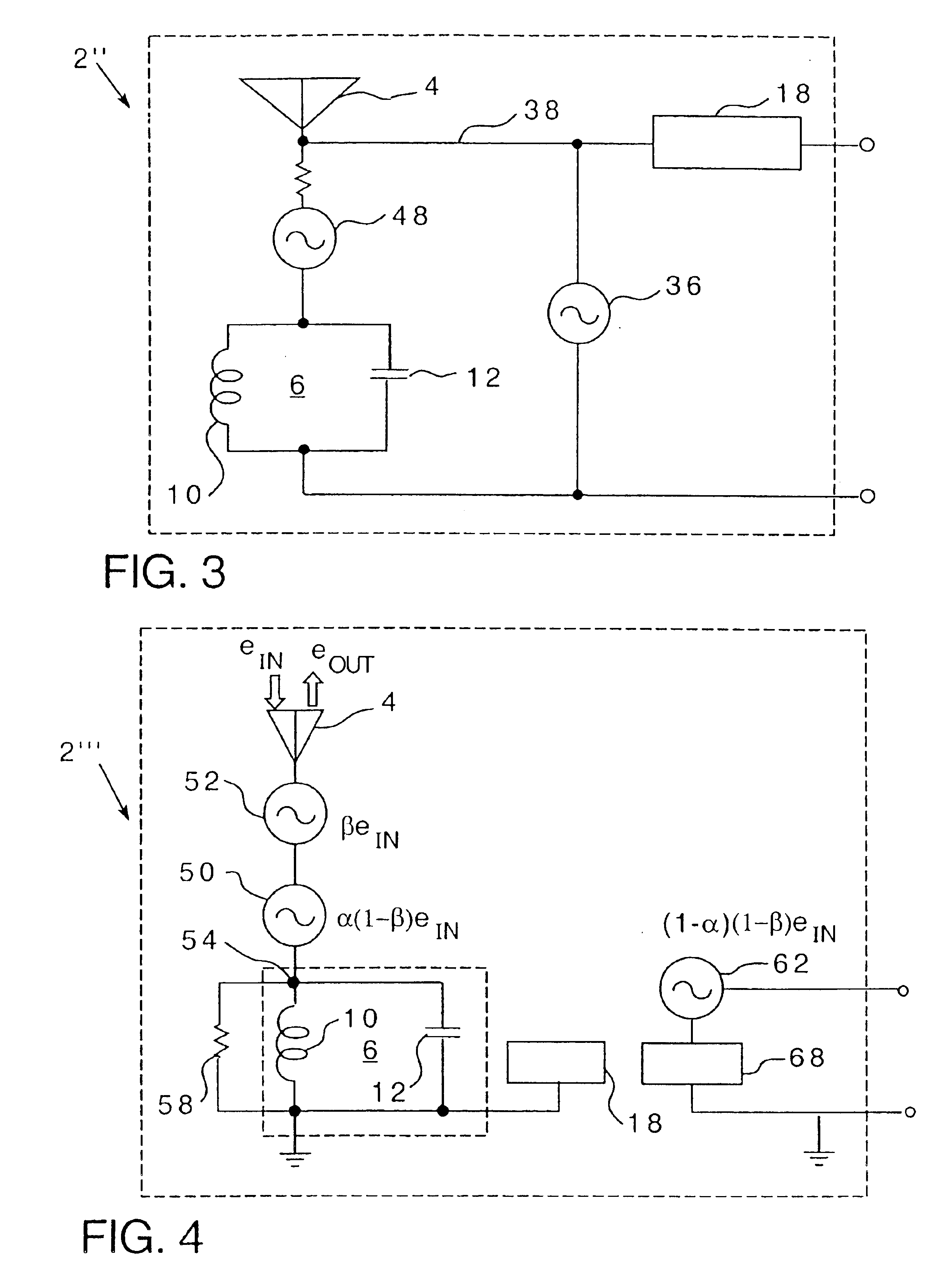Energy harvesting circuits and associated methods
a technology of energy harvesting circuit and energy harvesting circuit, which is applied in the field of inherently tuned antennas, can solve the problems of lack of stability, increase complexity and cost, and do not teach how to achieve the
- Summary
- Abstract
- Description
- Claims
- Application Information
AI Technical Summary
Benefits of technology
Problems solved by technology
Method used
Image
Examples
example 1
It will be appreciated that the invention is suited for use with extremely small circuits which may be provided on integrated circuit chips. Assuming, for example, energy harvesting at a radio frequency (RF) of 915 MHz, the effective area of an antenna normally does not get smaller than k×82 with k being less than or equal to 1 that is a wavelength of the given frequency (8) on a side. For example, if the antenna is a typical half-wave dipole, the effective area is not much smaller than 82. At 915 MHz, the wavelength 8 is approximately 12.908 inches and, as a result, the k 82 of a half-wave dipole for energy harvesting would be 21.66 square inches with k equal to 0.13. The half-wave characterization implies something about the dimensions of the antenna. However, the physical dimension of the antenna employable advantageously with the present invention would be substantially less than 21.66 square inches.
As a second example, a quarter-wave “whip” antenna having an effective area of 0...
example 2
In order to provide a further comparison, one may consider a test antenna which is 1560 micron square in a planar antenna on a CMOS chip as the test antenna. The antenna was designed to provide a full conductive path over a quarter of a cycle of a 915 MHz current, i.e., a quarter of a wavelength. The test antenna employed in the experiments had a square spiral of a length of approximately 3.073 inches, wherein the spiral is formed within a square of 1560 microns. As a result, the length of the conductor is one quarter wavelength, but it does not appear as the traditional quarter wave whip antenna. The 1560 micron dimension establishes a physical antenna area microns is 0.061417 inches, thereby providing a physical area of the spiral antenna of 0.00377209 inches.
In establishing the square spiral, the material employed was made up of a conductive coil of aluminum with a square resistance of 0.03 ohms. The conductive coil was put on the substrate as part of the AMI_ABN—1.5:CMOS process...
PUM
 Login to View More
Login to View More Abstract
Description
Claims
Application Information
 Login to View More
Login to View More - R&D
- Intellectual Property
- Life Sciences
- Materials
- Tech Scout
- Unparalleled Data Quality
- Higher Quality Content
- 60% Fewer Hallucinations
Browse by: Latest US Patents, China's latest patents, Technical Efficacy Thesaurus, Application Domain, Technology Topic, Popular Technical Reports.
© 2025 PatSnap. All rights reserved.Legal|Privacy policy|Modern Slavery Act Transparency Statement|Sitemap|About US| Contact US: help@patsnap.com



